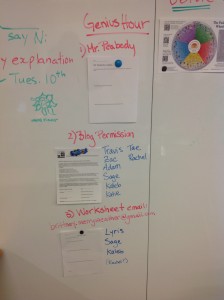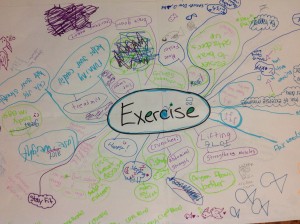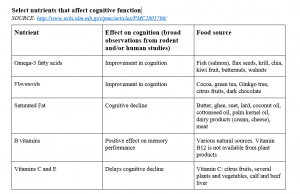As a Teacher Candidate, I was lucky enough to have two significantly different experiences that dramatically highlighted the importance of student-teacher relationships and building trust, respect, and care gradually and purposefully over time. In the initial portion of my practicum, I spent several months in the classroom on a weekly basis, observing, frontloading, and most importantly, talking to the students. I had a chance to develop a vital rapport with the class, which resulted in a mutual understanding about expectations, roles, and values. The latter half of my practicum was radically different, and comparable to the role of a short-term teacher on call (substitute teacher). My introduction to the class was brief, and there was little flexibility in allotting time to actively work with the class to develop our community and relationships. Naturally, there were instances of frustration as we initially found our way together. However, through research, dedication, and continual active reflection, I was able to experiment with various strategies to support my philosophy of classroom environment. Overall, my second practicum contributed to a valuable learning experience that has helped me recognize my strengths and areas of future growth.
Initial Practicum
To see the blog posts about my experiences with classroom environment during my second practicum and my capstone comments, click below:
On the first full day of my practicum, I was actively included into the budding classroom community, which set the tone for my initial practicum experience. Time was set aside for a thorough exchange of introductions, the class made me a large card, and a talking circle was initiated which addressed some expectations of roles and learning in the classroom.

“I had my first full day with my School Advisor and new class. He was extremely welcoming, and made me feel very comfortable in class. He organized a talking circle where the students got to each tell me what they valued in a teacher. At the end of the exercise they brought out a very large handmade welcome card for me. It really set the tone for my experience in the class, and made me think about how I can do the same for students at the beginning of the year.” Thursday October 16th 2014
Time and participation in both classroom and school activities played an integral role in my inclusion within, and contributions to the developing community. By attending the school’s opening ceremony, class tours of the school, and participating in the Halloween festivities, I became integrated within the foundations and framework of the community’s success. I believe my appearance at, and participation in, activities outside of the classroom demonstrated my commitment and dedication to our community, and contributed to the respect and trust that developed between myself and the class. My attendance at the student-led parent-teacher conferences further extended my presence from the classroom community to the home environment where parents were able to meet me, in addition to their full-time classroom teacher.
“Today, the teachers were fairly tired, as they had parent teacher interviews until past 8pm on Wednesday night. I attended the interviews and was able to meet a few of the parents. The mother of a girl I had explained something to the week before thanked me and said that her daughter now had a much greater understanding of the concepts covered in math. This interaction made me happy, both for the student’s sense of success, my ability to help her become successful, and my inclusion in the student’s stories home; I feel as though I am becoming a member of the community in this classroom.” Thursday October 23rd 2014
Although I did not directly coordinate the activities that initiated the development of classroom community, my involvement provided avenues for the formation of positive student-teacher relationships. These avenues began meaningful dialogue, which naturally initiated the process of incorporating student voice (and consequently ownership) within the classroom as I began to increasingly take on the role as classroom teacher.

“When I began to assign homework for the day, the students began to complain. I decided to open the topic up for discussion, and assigned one person as representative to tell me about what other homework they had from other classes. From there, we collectively made a graphic organizer and decided on three options for the current homework situation. We then voted on which situation the students found to be the most realistic in terms of expectations and time required to be successful. The students were happy with the democratic approach, and I could tell they felt respected that their voices were being heard.” Week 2 of long practicum
The example above was one of the many instances that my acknowledgement of student voice resulted in elevated mutual respect within the classroom. These instances played an important role in both my relationship with the whole class, and my individual relationships with students. Fostering positive relationships with individual students became a priority for me after reading Spirals of Inquiry, which described the story of an experienced English teacher named Brigit that has “influenced many BC inquiry educators” (Halbert & Kaser, 2013). At the beginning of each year, many students would line up outside the counselor’s office requesting to be placed in Brigit’s English class. The students in her classes rarely skipped, and expressed genuine enthusiasm for her course, resulting in high class participation rates and the highest success rates in the district. After months of inquiry, it was found that Brigit made an explicit effort “to speak with each of her learners every day about some aspect of their personal lives […taking] the few moments available to her as learners came to her class to connect with them” (Halbert & Kaser, 2013).
After reading that article, I made a valiant effort to do the same during my practicum. I found it very difficult to talk to each learner each day, however I made sure to put some time aside to speak with at least two or three students each day. I also began doing “learning check-ins” where I would sit down with one or two students each day during project work time and inquire about how they were feeling about their learning, what they needed in order to be successful, and what plans could be put in place to best improve their learning experience.
In addition to making an effort to speak to each student on a personal level, I found that inquiry based projects also provided me with a lot of information about students’ passions, personalities, strengths and weaknesses. I spent time in conferences with students as they explored their interests, values, mindsets, and goals, making it possible for me to personalize future instruction. Additionally, as inquiry projects are inherently more self-directed, and require self-regulation of student learning, we were able to explore individual learning needs. In order to create the best environment for students to do this, we did several activities to determine students’ metacognition, learning needs, and metamotivation.
I was able to spend several classes exploring these concepts with the class, through activities and discussions pertaining to learner types, learning environments, learning strategies, and reflection. The culminating activity was a detailed learner profile for each student, and they had the option to share their discoveries with the class to build awareness of the diversity in needs. These activities helped students not only recognize what they needed in terms of materials, activities, and environment to best succeed, but also what others needed to best succeed. I believe this played a role in building lasting mutual respect for the members of our community, an understanding of diversity, and a recognition of unique learning journeys.
“My hook for today’s lesson was related to what the class is currently studying in Science (water). I used the subject to illustrate a point about different learning styles. The class indicated that they had previously heard about the types of learners from another class, but they hadn’t done anything with the information. We explored the concepts through stations with just text, just images, just audio, and stations with a small experiment.
I decided to try a “prior activation” approach, as was recommended by Deb. I wrote guiding questions on the board before the stations exercise, and told the class that this is what they should be thinking about while they do the activity, and that we will be discussing the answers to these questions after the activity. It worked very well, and the students all had something to contribute at the end of the activity. It made for good discussion, and allowed the students to make better connections between what they were doing and what they were being asked.
Their final learner profiles took a while for them to complete, but I had scheduled enough time for this based on how they have performed previously on other tasks. There was no stress for them to finish quickly, but I did walk around asking questions to help them stay on task.” Week 1 of long practicum
Awareness of stressors and stress reduction was also a focus of creating a positive classroom environment. We did this by taking an in depth look at the brain and the body’s stress pathways. These activities were supported by the MindUp program (Scholastic, 2011), and aimed to reduce the impact of negative emotions on disrupting the learning process (Boekaerts, 2010). By creating healthy mind platters, and exploring ways to find appropriate balance in their lives, students became more aware of the external factors affecting their learning and explored ways to reduce anxiety (such as mindfulness).
The result of this exploration and front-loading was enhanced compassion and empathy for the various learners in the classroom, ultimately reducing the stress and promoting positive emotions. I believe the result of the positive classroom environment was captured in an observation conducted by my Faculty Advisor (Anecdotal Report – Brittney Merryweather – Apr 16, 2015). Based on literature, and my personal experiences with the success of this program in my practicum, I would love the opportunity to incorporate a mindfulness program into my classroom teachings.



 Follow
Follow